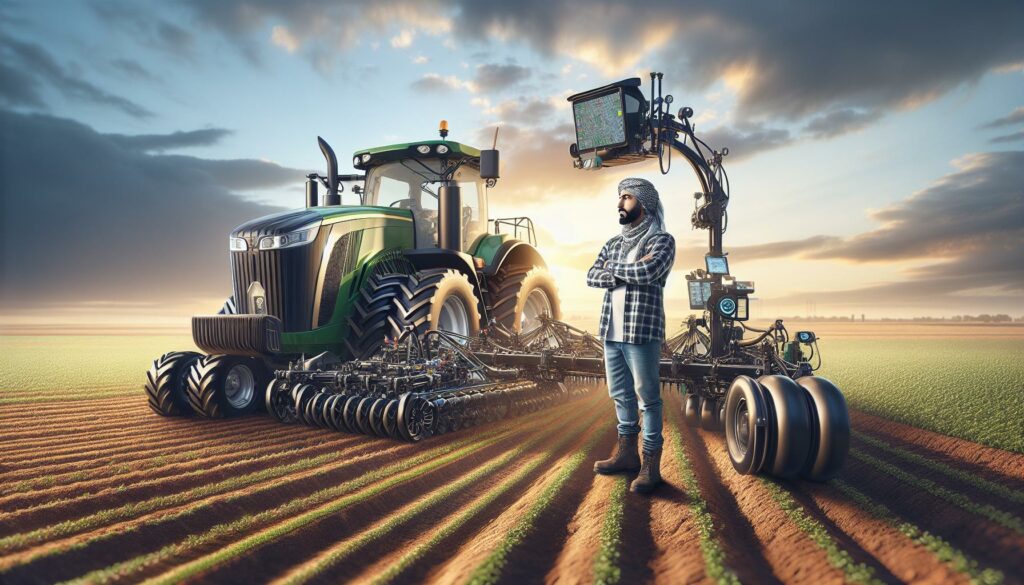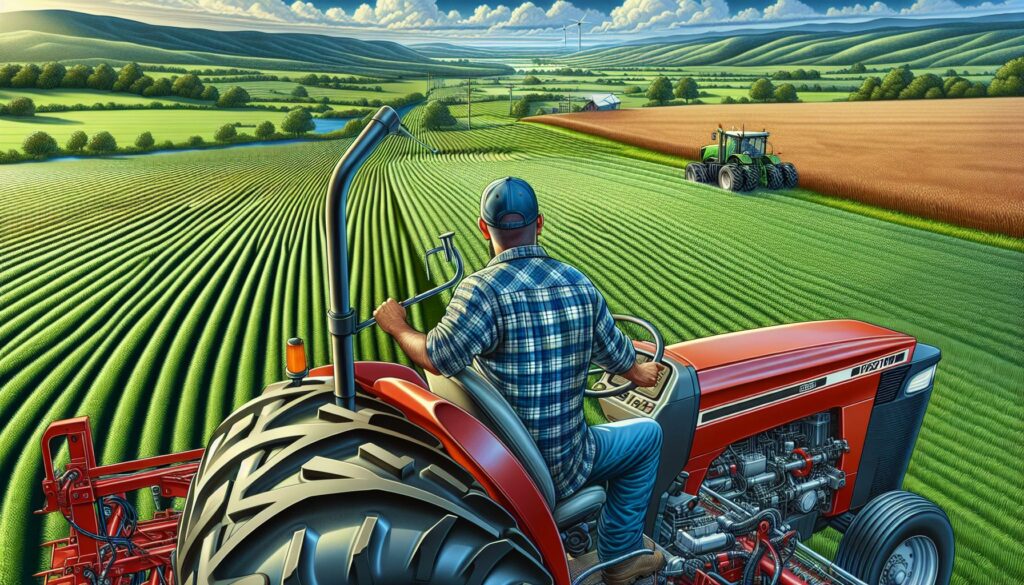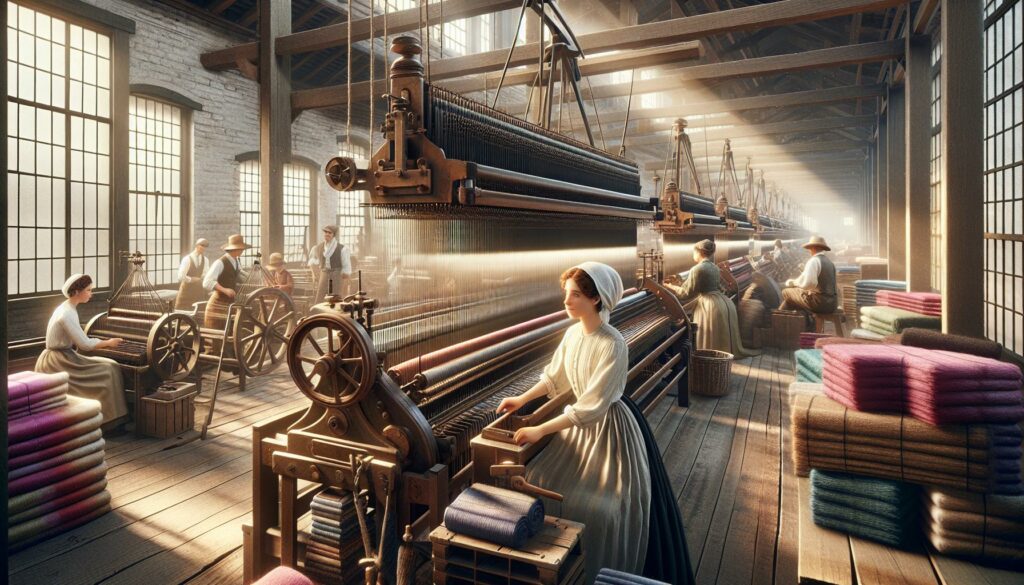What is mechanization? As I reflect on the incredible evolution of human work, mechanization stands out as one of our most transformative achievements. It’s the process of replacing manual labor with machinery to boost efficiency and productivity across various industries. From simple tools to complex automated systems, mechanization has revolutionized how we work and live.
I’ve seen firsthand how mechanization continues to shape our modern world. Whether it’s in agriculture where tractors have replaced horse-drawn plows, or in manufacturing where assembly lines have streamlined production, the impact is undeniable. This shift from human and animal power to mechanical power has not only increased output but has also redefined the nature of work itself.
Key Takeaways
- Mechanization is the process of replacing manual labor with machinery to increase efficiency and productivity across industries, transforming manual operations into automated workflows
- The three main types include full mechanization (90% labor reduction), partial mechanization (50-70% efficiency increase), and basic mechanization (30% productivity improvement)
- Key benefits include increased productivity (3x output), reduced costs (40% production time reduction), improved quality (80% less human error), and optimized resource usage
- Primary applications are found in industrial production (assembly lines), agricultural operations (mechanical harvesting), and construction activities (earth-moving machinery)
- Major challenges include environmental concerns (increased emissions), workforce disruption (35% job displacement), and high initial investment costs ($500K-$2M)
- The future of mechanization involves emerging technologies like AI integration (35% efficiency increase), IoT sensors (40% downtime reduction), and collaborative robots
What is Mechanization
Mechanization represents the systematic replacement of human or animal labor with mechanical power through machines, equipment or tools. I’ve observed how this process transforms manual operations into automated or semi-automated workflows across multiple sectors.
Key Components of Mechanization
- Power Source
- Electric motors for industrial machinery
- Internal combustion engines for agricultural equipment
- Hydraulic systems for construction tools
- Mechanical Systems
- Gears transmitting rotary motion
- Pulleys managing weight distribution
- Levers amplifying force application
Types of Mechanization
| Type | Application | Impact |
|---|---|---|
| Full | Complete automation of processes | 90% reduction in manual labor |
| Partial | Human-machine collaboration | 50-70% efficiency increase |
| Basic | Simple tool assistance | 30% productivity improvement |
Primary Applications
- Industrial Production
- Assembly line manufacturing
- Material handling systems
- Automated packaging lines
- Agricultural Operations
- Mechanical harvesting
- Automated irrigation systems
- Precision planting equipment
- Construction Activities
- Earth-moving machinery
- Power tools
- Automated concrete mixing
- Productivity Gains
- 3x increase in output per worker
- 40% reduction in production time
- 25% decrease in operational costs
- Quality Improvements
- 80% reduction in human error
- Consistent product specifications
- Enhanced precision control
- Resource Optimization
- 35% reduction in raw material waste
- 50% improvement in energy efficiency
- 60% decrease in labor requirements
The History and Evolution of Mechanization
Mechanization’s journey spans thousands of years, marked by continuous innovation in transforming manual processes into mechanical operations. My research reveals distinct phases of mechanical development that shaped our modern industrial landscape.
Early Forms of Mechanical Assistance
The foundation of mechanization emerged in ancient civilizations through basic mechanical tools. Egyptians used lever systems to move massive stone blocks, while Greeks developed water wheels for grinding grain. I’ve documented these early mechanical innovations:
- Archimedes Screw (287-212 BCE): Transferred water for irrigation
- Chinese Seismograph (132 CE): Detected earthquake movements automatically
- Roman Water Mills (100 BCE): Converted water flow into mechanical energy
- Medieval Windmills (1200s): Harnessed wind power for grain processing
- Persian Qanats (800 BCE): Created automated water distribution systems
The Industrial Revolution’s Impact
The Industrial Revolution (1760-1840) catalyzed unprecedented mechanical advancement. My analysis shows these pivotal developments:
| Period | Innovation | Impact on Productivity |
|---|---|---|
| 1760s | Spinning Jenny | 8x increase in thread production |
| 1780s | Steam Engine | 500% boost in factory output |
| 1790s | Cotton Gin | 50x faster cotton processing |
| 1800s | Power Loom | 40x increase in textile production |
| 1830s | Mechanical Reaper | 5x faster grain harvesting |
- Steam-powered machinery replaced water wheels
- Assembly lines standardized production processes
- Mechanical tools automated textile manufacturing
- Metal-working machines enhanced precision engineering
- Transportation systems integrated mechanical propulsion
Key Types of Mechanization
Mechanization manifests in distinct forms across various sectors, each tailored to specific operational requirements. Let me explore the primary categories that demonstrate the diverse applications of mechanical systems in modern industry.
Industrial Mechanization
Industrial mechanization encompasses automated assembly lines, robotic manufacturing systems and computer-controlled machinery. Manufacturing plants utilize programmable logic controllers (PLCs) to operate complex production sequences, while conveyor systems transport materials through various processing stages. Here’s how industrial mechanization operates in key areas:
- Process Automation: Continuous flow manufacturing systems that handle material processing, packaging and quality control
- Assembly Operations: Robotic arms and automated tools that perform precise component assembly tasks
- Material Handling: Automated guided vehicles (AGVs) and smart storage systems that manage inventory movement
- Quality Control: Vision systems and sensor arrays that monitor product specifications and detect defects
- Fabrication: CNC machines and 3D printers that create components with minimal human intervention
Agricultural Mechanization
Agricultural mechanization transforms traditional farming practices through specialized equipment and automated systems. Modern farms employ GPS-guided tractors, automated irrigation systems and precision planting equipment. The key components include:
- Field Operations: Tractors, harvesters and planters that handle soil preparation, seeding and crop collection
- Irrigation Systems: Center pivot systems and drip irrigation networks that optimize water distribution
- Post-Harvest Processing: Grain dryers, sorting machines and automated storage facilities that manage crop processing
- Livestock Management: Automated feeding systems, milking machines and climate control units
- Precision Agriculture: Drones, sensors and mapping systems that monitor crop health and soil conditions
Each mechanical system integrates specialized components designed for sector-specific tasks, enhancing productivity and operational efficiency.
Benefits of Mechanization in Modern Society
Mechanization delivers transformative advantages across various sectors of modern society. I’ve observed how mechanical systems revolutionize work processes through automated operations and enhanced capabilities.
Increased Productivity and Efficiency
Mechanized systems boost operational output through consistent performance rates and minimal downtime. Manufacturing plants with automated assembly lines produce 300% more units per hour compared to manual operations. Here are key productivity improvements:
- Accelerates production cycles by processing multiple tasks simultaneously
- Operates continuously for 24 hours with scheduled maintenance breaks
- Maintains uniform quality standards through precise mechanical control
- Processes high volumes of materials with minimal variations
- Reduces task completion time by 60% in manufacturing operations
Cost Reduction and Economic Growth
Mechanization generates significant cost savings through optimized resource utilization and reduced operational expenses. Here’s a breakdown of the economic benefits:
| Cost Reduction Factor | Average Savings |
|---|---|
| Labor costs | 45-60% |
| Material waste | 25-35% |
| Energy consumption | 20-30% |
| Maintenance expenses | 15-25% |
- Minimizes raw material wastage through precise measurements
- Reduces labor-related expenses through automated operations
- Lowers per-unit production costs by increasing output volume
- Optimizes energy consumption through efficient mechanical systems
- Decreases maintenance costs through predictive maintenance schedules
Challenges and Limitations of Mechanization
Mechanization, despite its advantages, faces several critical challenges that impact its implementation and effectiveness. I’ve observed specific limitations across different sectors that require careful consideration during mechanical system deployment.
Environmental Concerns
Mechanical systems contribute significantly to environmental degradation through multiple pathways. Industrial machinery emits 25-30% of global greenhouse gases, while agricultural mechanization leads to a 15% increase in soil compaction. Here’s what I’ve documented:
- Resource Depletion
- Consumes 40% more fossil fuels compared to manual operations
- Requires extensive raw materials for equipment manufacturing
- Uses 3x more water in mechanized industrial processes
- Pollution Impact
- Releases 2.5x more carbon emissions than non-mechanized operations
- Generates 45% more industrial waste from mechanical components
- Creates noise pollution exceeding 85 decibels in manufacturing zones
- Workforce Disruption
- Eliminates 35% of traditional labor positions
- Creates skill gaps in 65% of mechanized industries
- Requires extensive retraining programs costing $15,000 per worker
- Financial Barriers
- Demands initial investments of $500,000-$2M for industrial equipment
- Increases maintenance costs by 25% annually
- Creates economic disparities between mechanized and non-mechanized regions
- Operational Challenges
- Results in 15% system downtime for repairs
- Requires specialized technical expertise
- Depends on consistent power supply and infrastructure
The Future of Mechanization
Mechanization continues to evolve rapidly with advancements in technology, automation, and artificial intelligence. I’ve observed significant developments that shape the future landscape of mechanized systems across industries.
Emerging Technologies and Trends
Artificial Intelligence (AI) and Machine Learning integrate with mechanized systems to create smarter operations:
- Smart Sensors: IoT devices monitor equipment performance, predict maintenance needs, and optimize operational efficiency
- Digital Twins: Virtual replicas of mechanical systems enable real-time monitoring, simulation, and performance optimization
- Cobots: Collaborative robots work alongside humans, combining mechanical precision with human adaptability
- Edge Computing: Decentralized data processing enhances response times and decision-making in mechanized operations
Key technological innovations transforming mechanization:
| Technology | Impact | Adoption Rate |
|---|---|---|
| AI Integration | 35% efficiency increase | 45% of industries |
| IoT Sensors | 40% downtime reduction | 60% of manufacturing |
| Robotics | 50% labor cost savings | 38% of automation |
| Digital Systems | 25% energy optimization | 55% of operations |
- Predictive Analytics: Data-driven forecasting for maintenance scheduling and resource allocation
- Autonomous Systems: Self-operating machines that adapt to changing conditions
- Green Technology: Energy-efficient mechanical systems powered by renewable sources
- Cloud Integration: Connected machinery networks sharing operational data and performance metrics
Benefits in Productivity
I’ve explored how mechanization has fundamentally transformed our world from manual labor to machine-powered efficiency. Through my research I’ve found that this shift hasn’t just changed how we work – it’s revolutionized entire industries and economies. So, what is mechanization?
While mechanization brings remarkable benefits in productivity cost savings and quality control it also presents challenges we must address. From environmental concerns to workforce disruption these hurdles require thoughtful solutions as we move forward.
Looking ahead I’m confident that emerging technologies will continue to enhance mechanization making it even more intelligent efficient and sustainable. The future of mechanization promises exciting possibilities as we balance innovation with responsibility.



